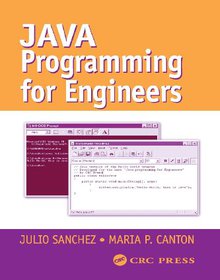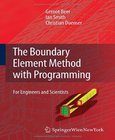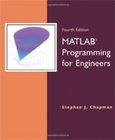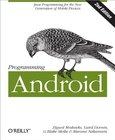Java Programming for Engineers

Book Details:
| Publisher: | CRC Press |
| Series: | CRC Press |
| Author: | Julio Sanchez |
| Edition: | 1 |
| ISBN-10: | 0849308100 |
| ISBN-13: | 9780849308109 |
| Pages: | 360 |
| Published: | Jun 20 2002 |
| Posted: | Feb 16 2015 |
| Language: | English |
| Book format: | |
| Book size: | 2.33 MB |
Book Description:
While teaching Java programming at Minnesota State University, the authors noticed that engineering students were enrolling in Java programming courses in order to obtain basic programming skills, but there were no Java books suitable for courses intended for engineers. They realized the need for a comprehensive Java programming tutorial that offers basic programming skills that can be applied in the field of engineering. With this in mind, the authors developed Java Programming for Engineers in order to meet the needs of both engineers and engineering students. The text uses the personal computer as a development platform and assumes no prior programming experience or knowledge. The only skills expected of the reader are basic keyboarding and user-level familiarity with the PC. Topics covered range from mathematical expressions to linear systems to engineering graphics. Chapters on problem solving skills and the designing of engineering applications walk readers through real word problems they might encounter. Divided into two parts, Part 1 is a description of the Java language, of the fundamentals of object orientation, input and output operations, and error handling. Part 2 is about Java programming for engineers. It starts with computer number systems, fixed- and variable-precision numeric data, mathematical programming in Java as could be of interest to engineers, and concludes with an overview of Java Graphics.
Download Link:
Related Books:
The Boundary Element Method with Programming
For Engineers and Scientists
This is a thorough, yet understandable text about the boundary element method (BEM), an attractive alternative to the finite element method (FEM). It not only explains the theory, but also deals with the implementation into computer code written in FORTRAN 95 (software can be freely downloaded). Applications range from potential problems to static and dynamic problems in elasticity and plasticity. The book also addresses the issue of fast solution of large scale problems, using parallel processing hardware. Special topics such as the treatment of inclusions, heterogeneous domains and changing geometry are also addressed. Most chapters contain exercises and this makes the book suitable for teaching. Applications of the method to industrial problems ar...
MATLAB Programming for Engineers
4th Edition
Emphasizing problem-solving skills throughout this very successful book, Stephen Chapman introduces the MATLAB language and shows how to use it to solve typical technical problems. The book teaches MATLAB as a technical programming language showing students how to write clean, efficient, and well-documented programs. It makes no pretense at being a complete description of all of MATLAB's hundreds of functions. Instead, it teaches students how to locate any desired function with MATLAB's extensive on line help facilities. Overall, students develop problem-solving skills and are equipped for future courses and careers using the power of MATLAB....
Programming Android
Java Programming for the New Generation of Mobile Devices
2nd Edition
Get thoroughly up to speed on Android programming, and learn how to create up-to-date user experiences for both handsets and tablets. With this book's extensively revised second edition, you'll focus on Android tools and programming essentials, including best practices for using Android 4 APIs. If you're experienced with Java or Objective-C, you'll gain the knowledge necessary for building well-engineered applications.Programming Android is organized into four parts:Part One helps programmers with some Java or iOS experience get off to a fast start with the Android SDK and Android programming basics. Part Two delves into the Android framework, focusing...
2007 - 2021 © eBooks-IT.org



